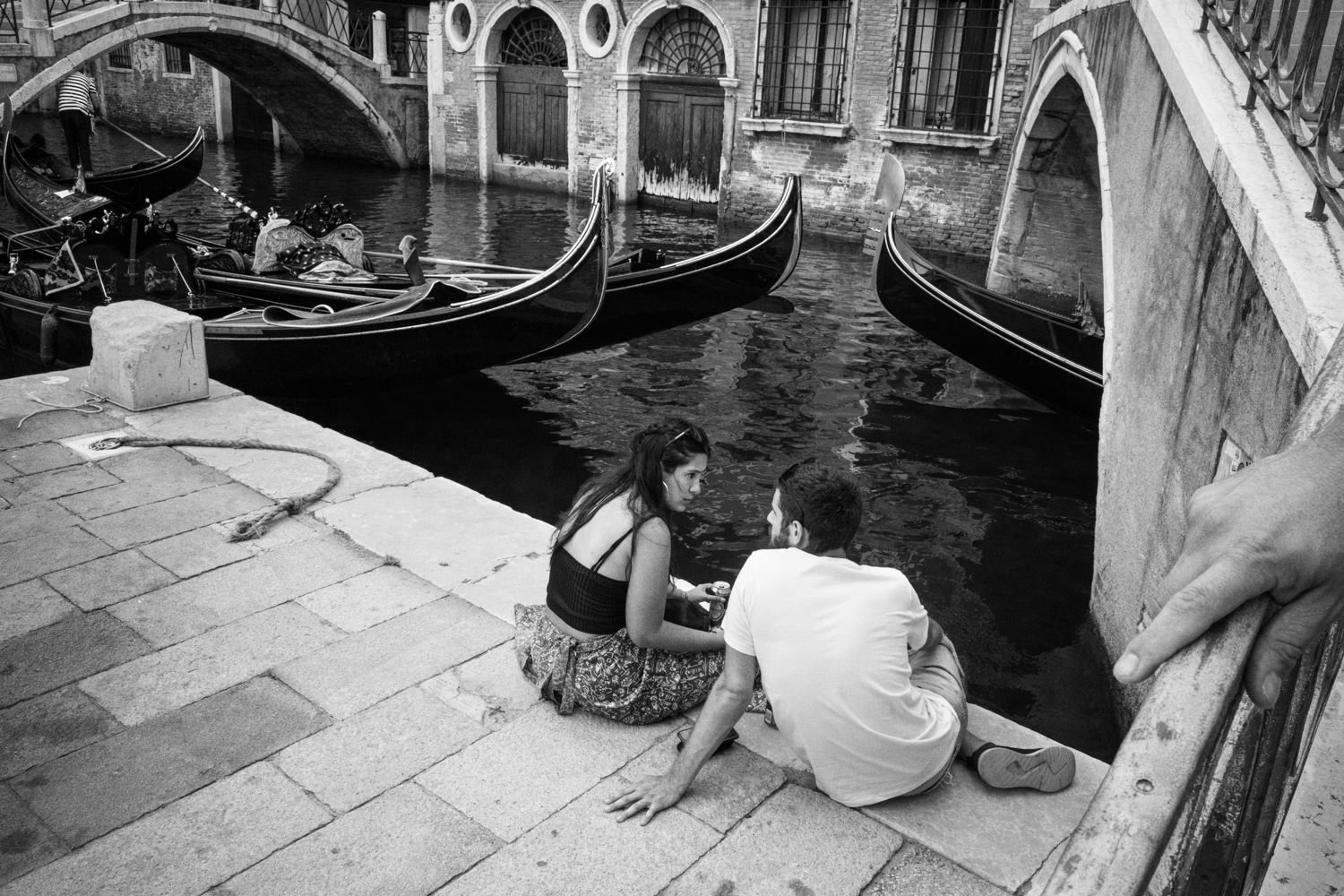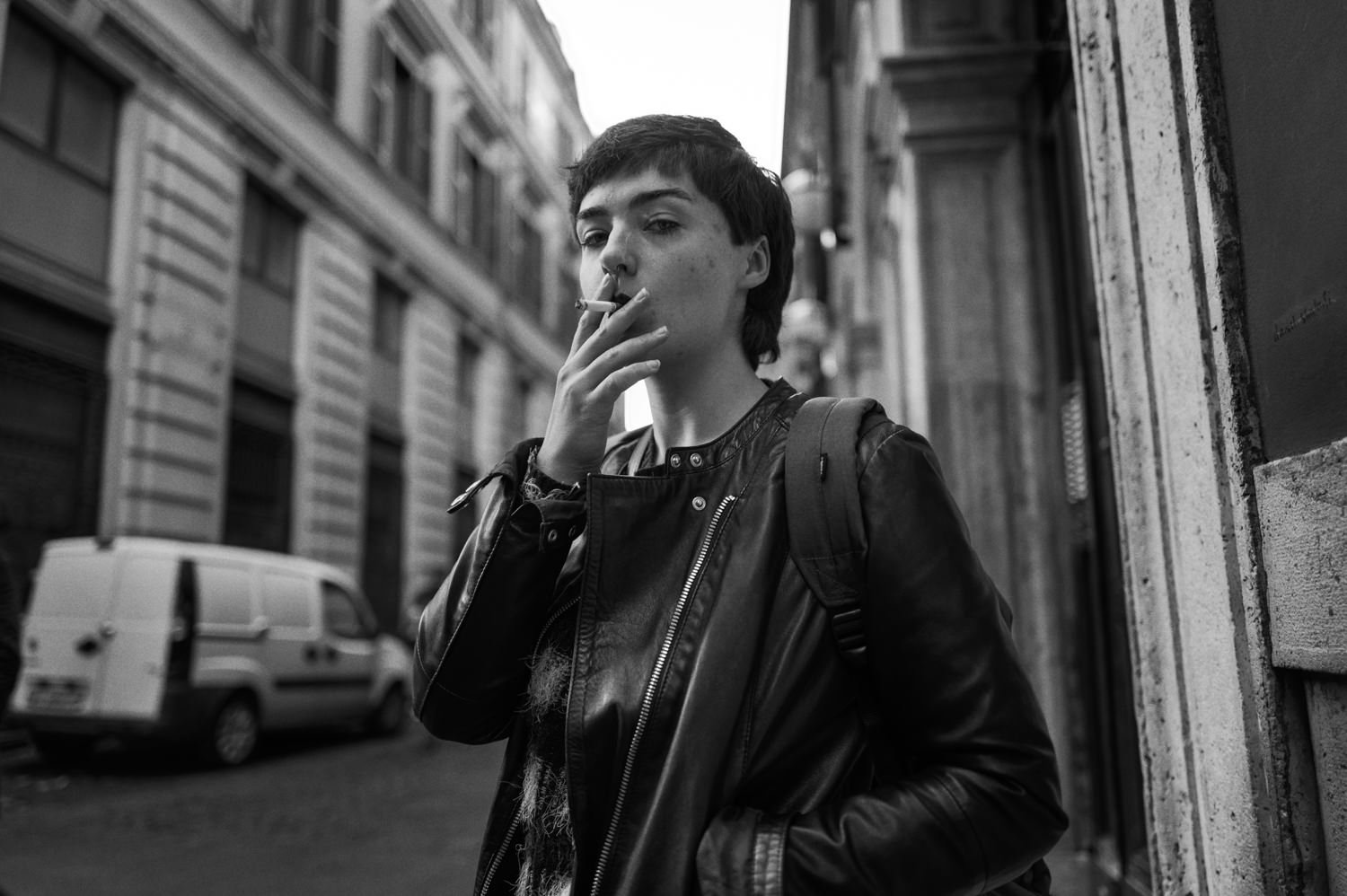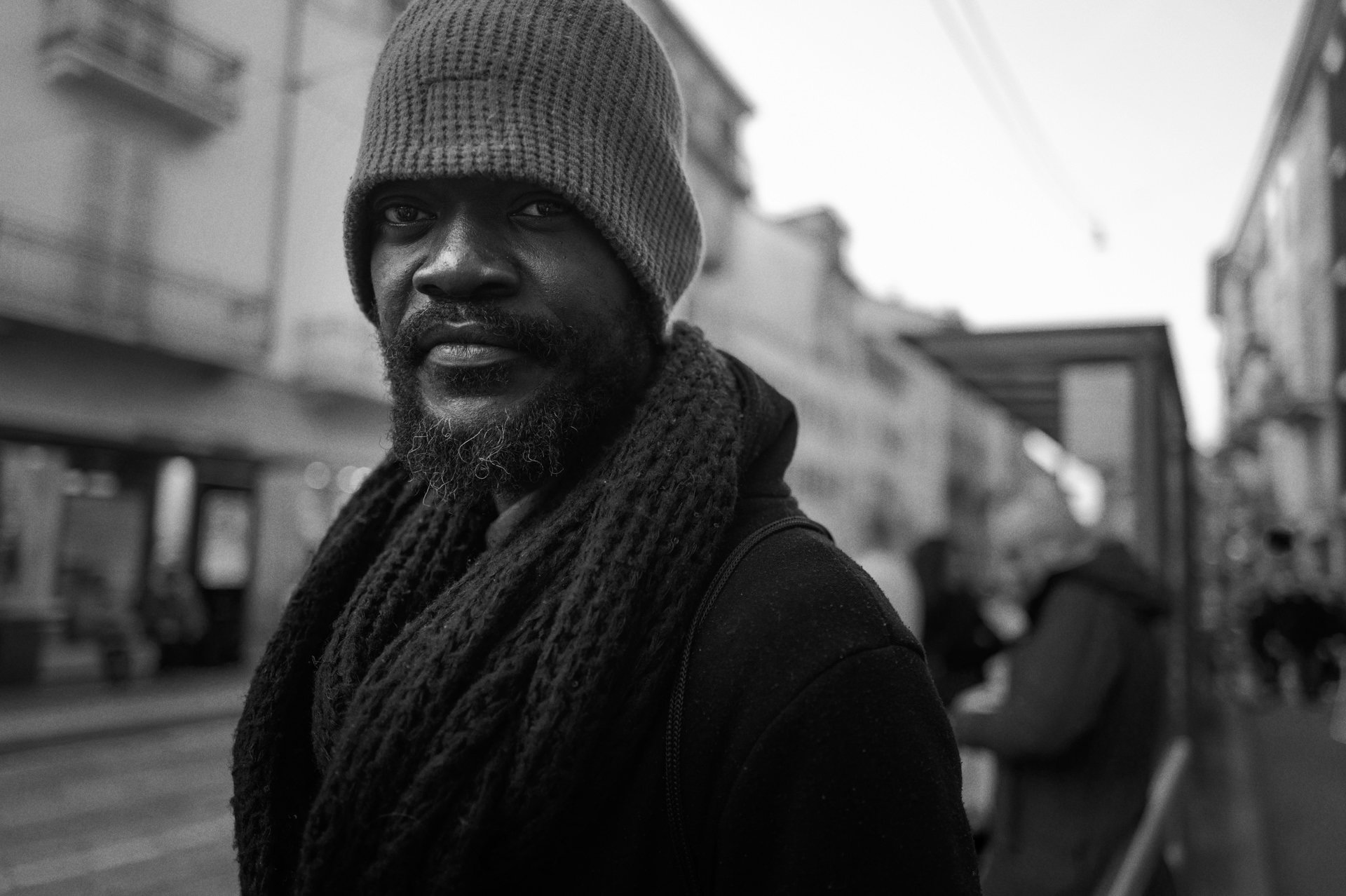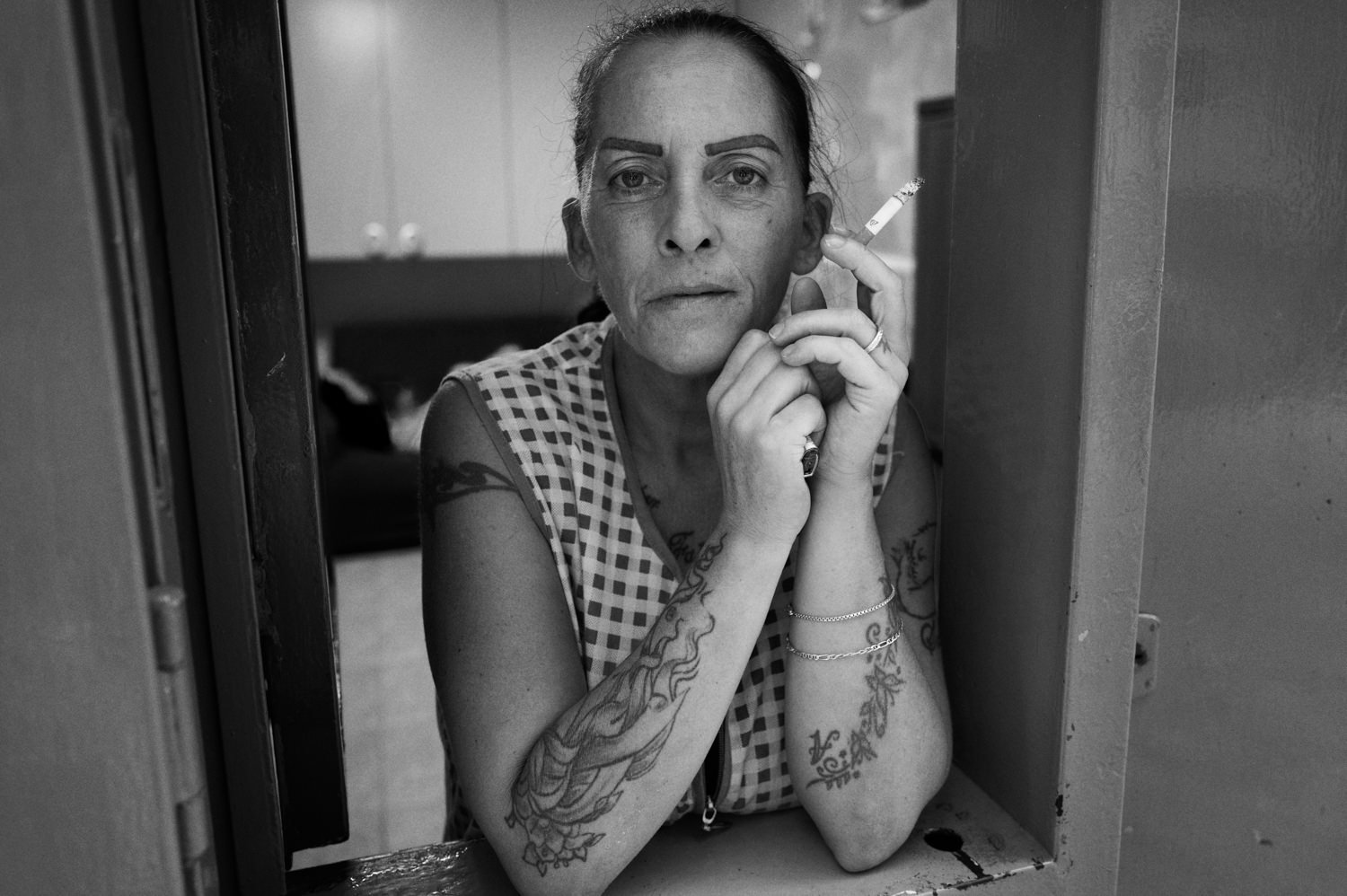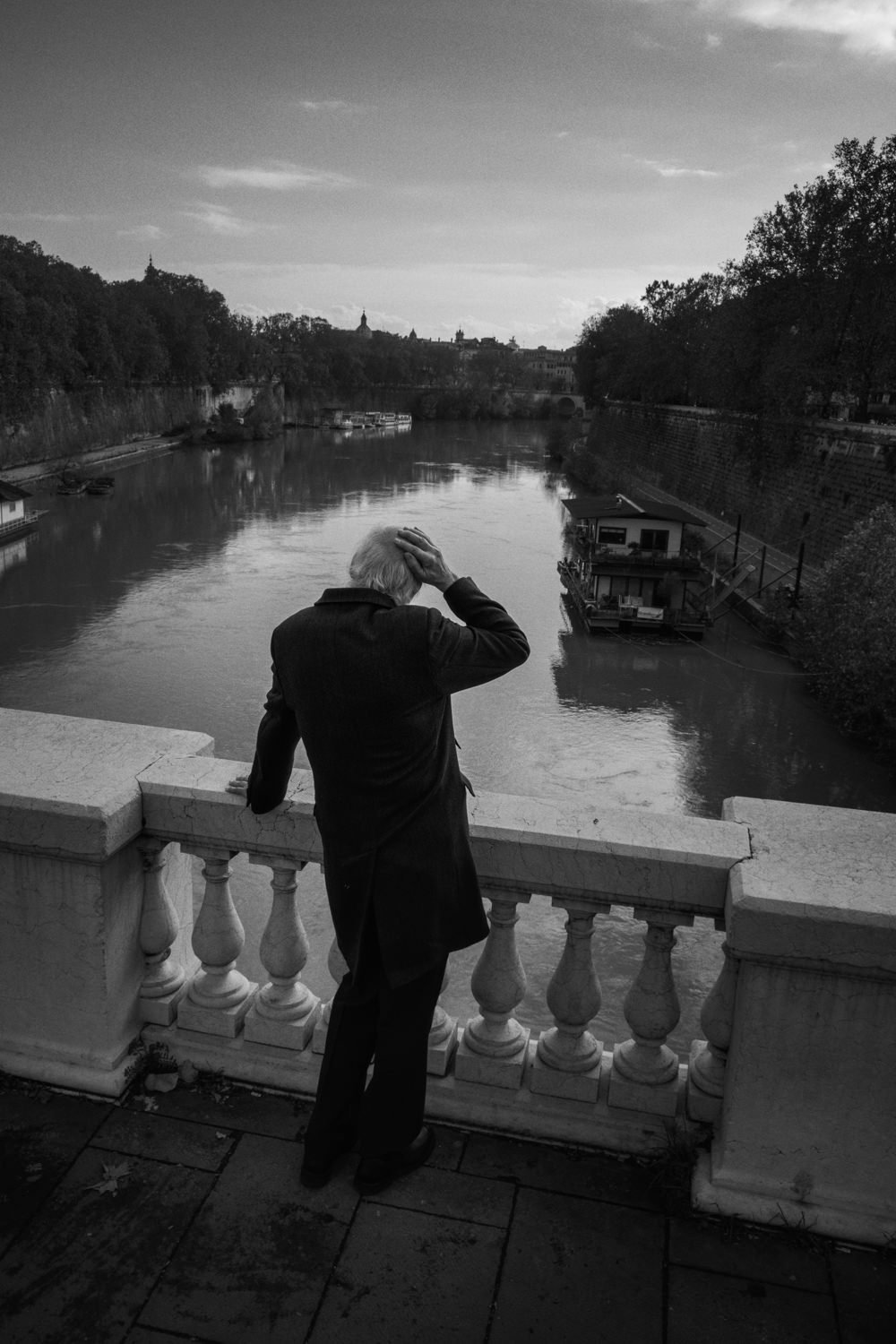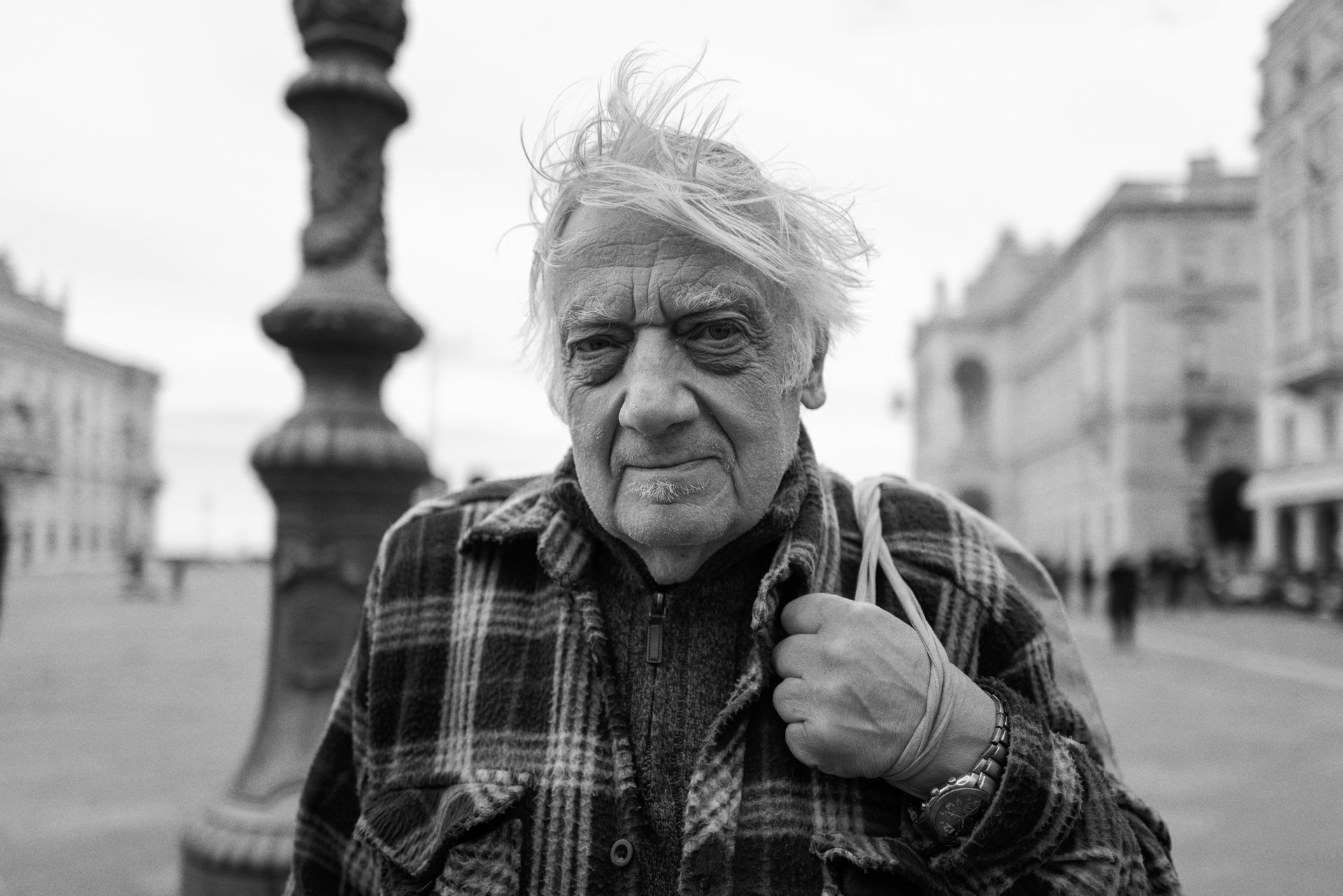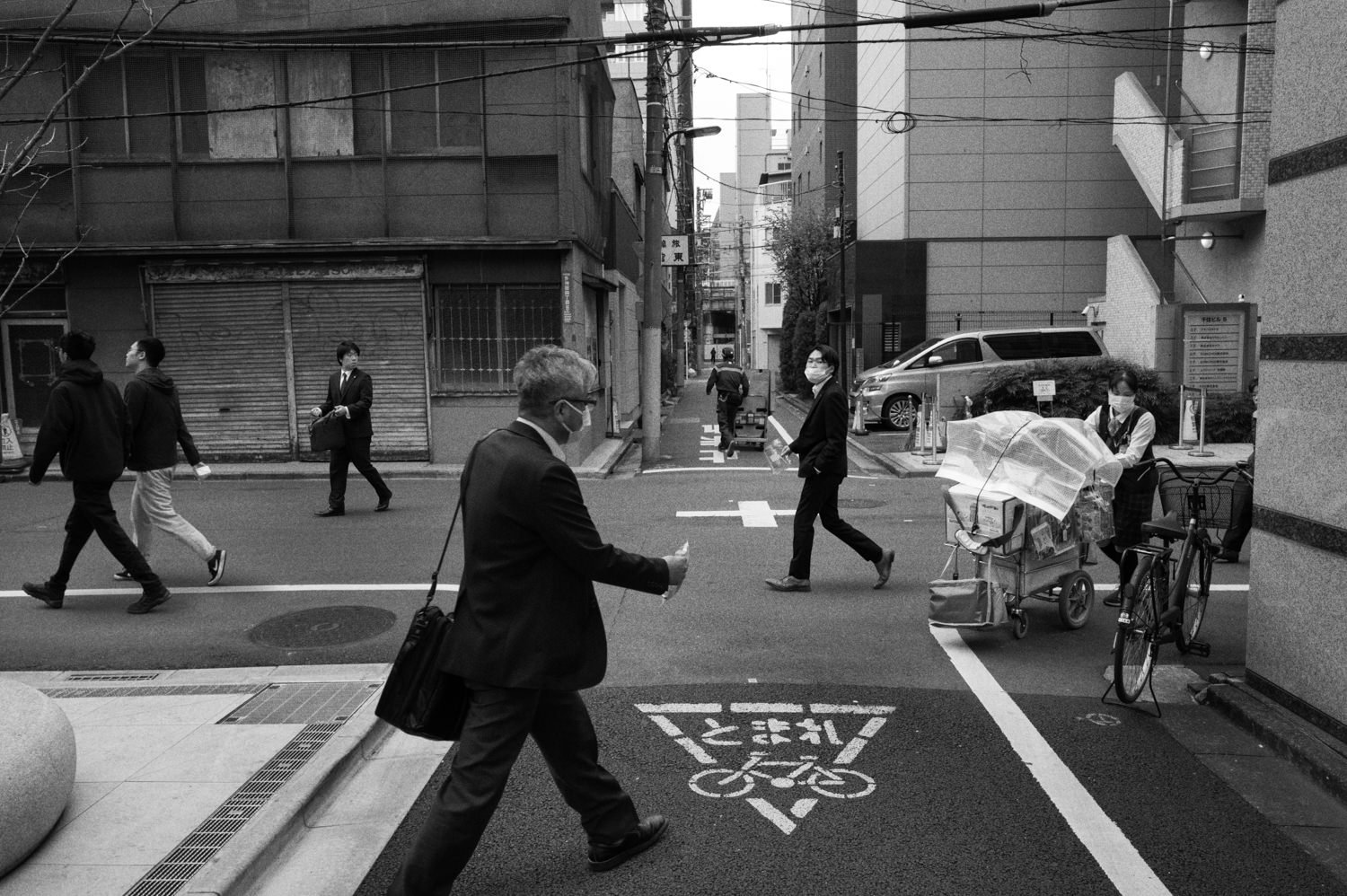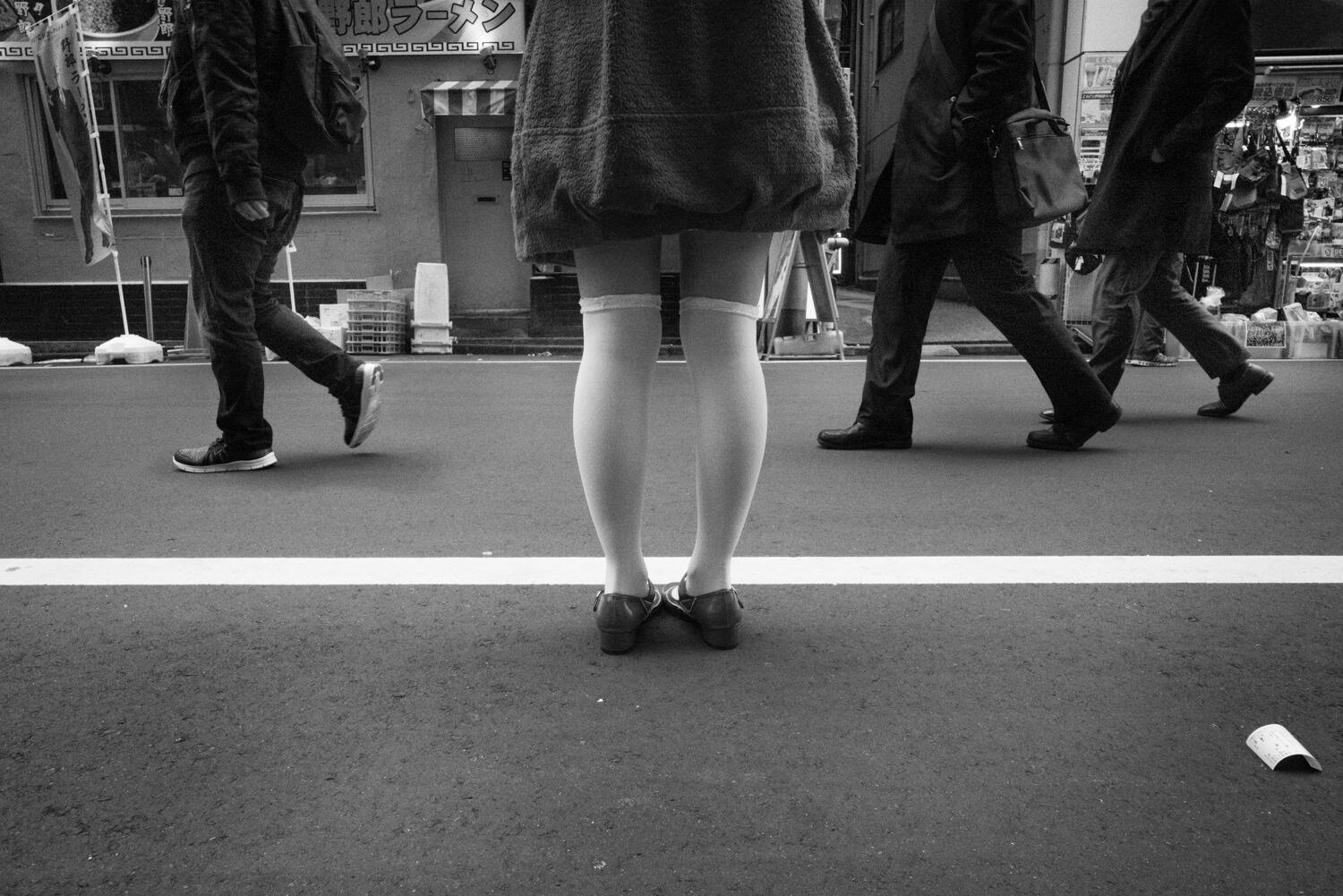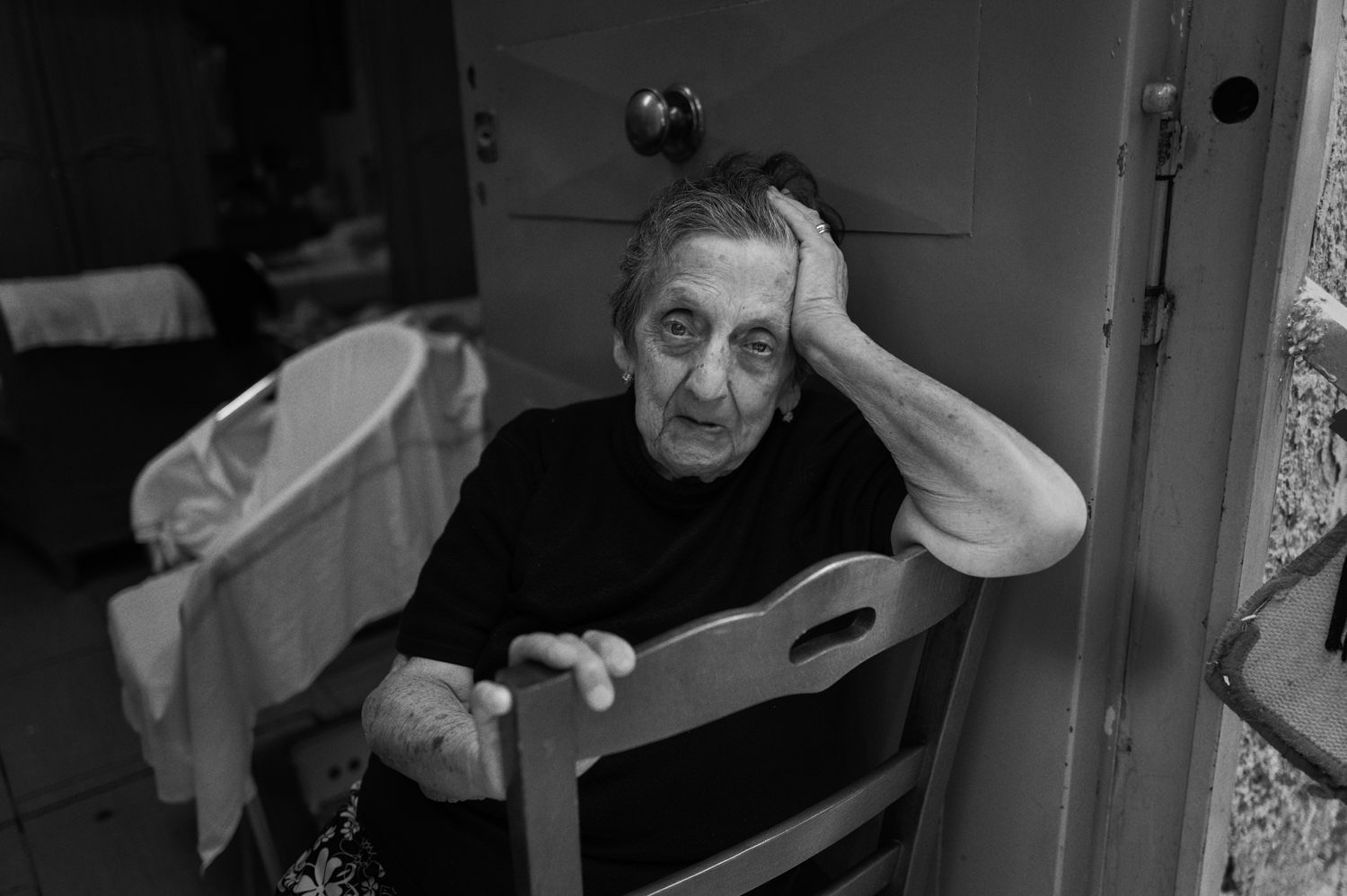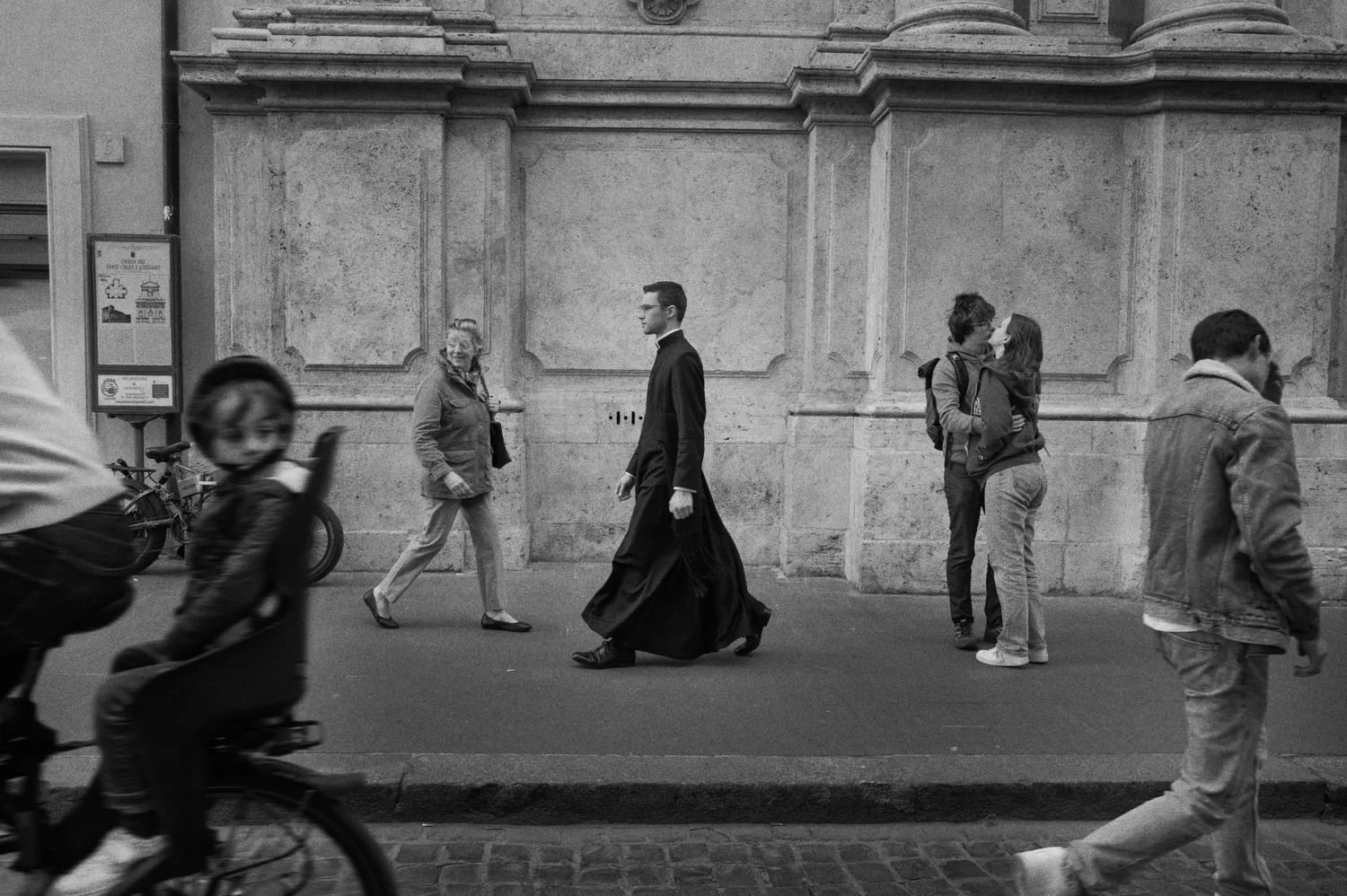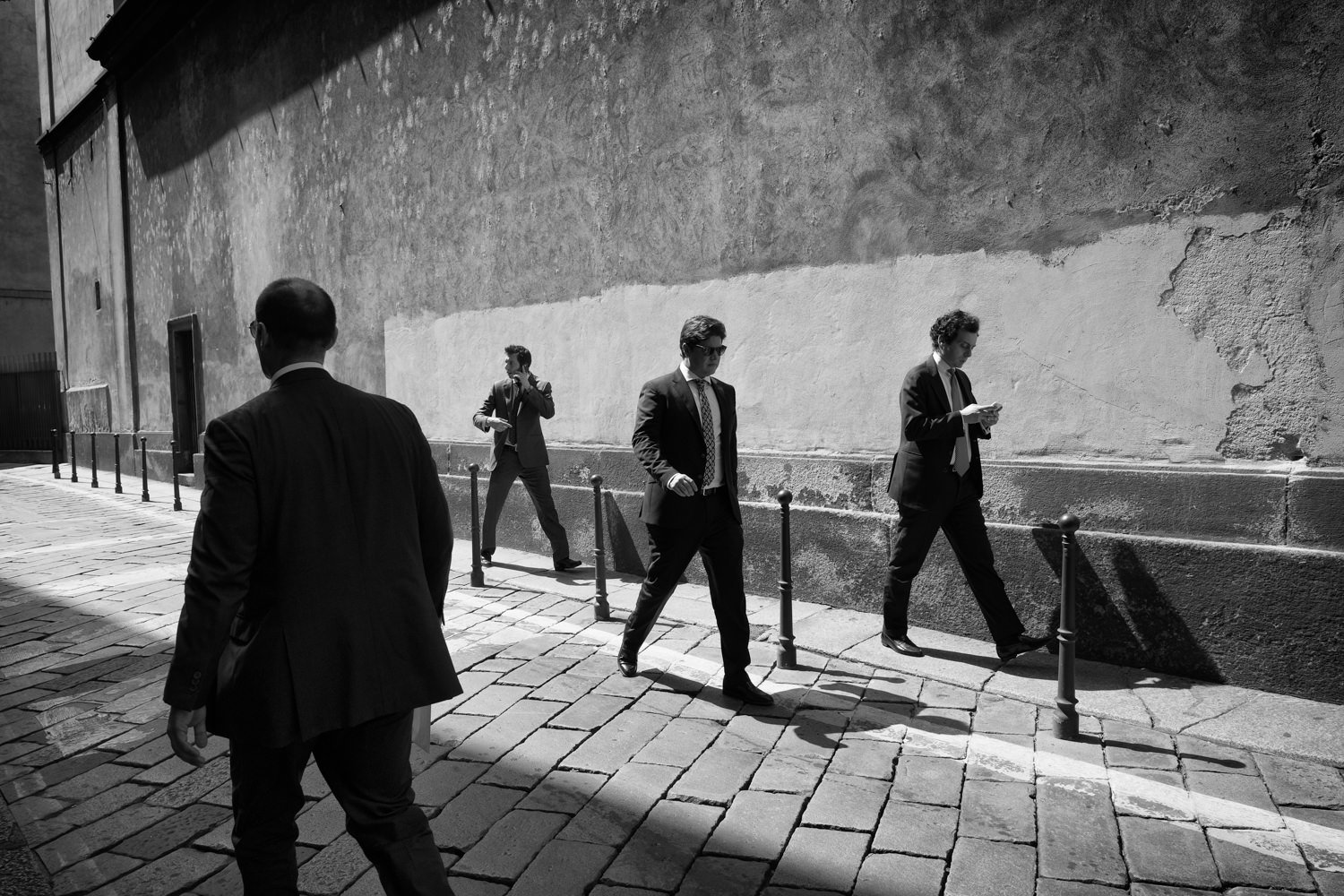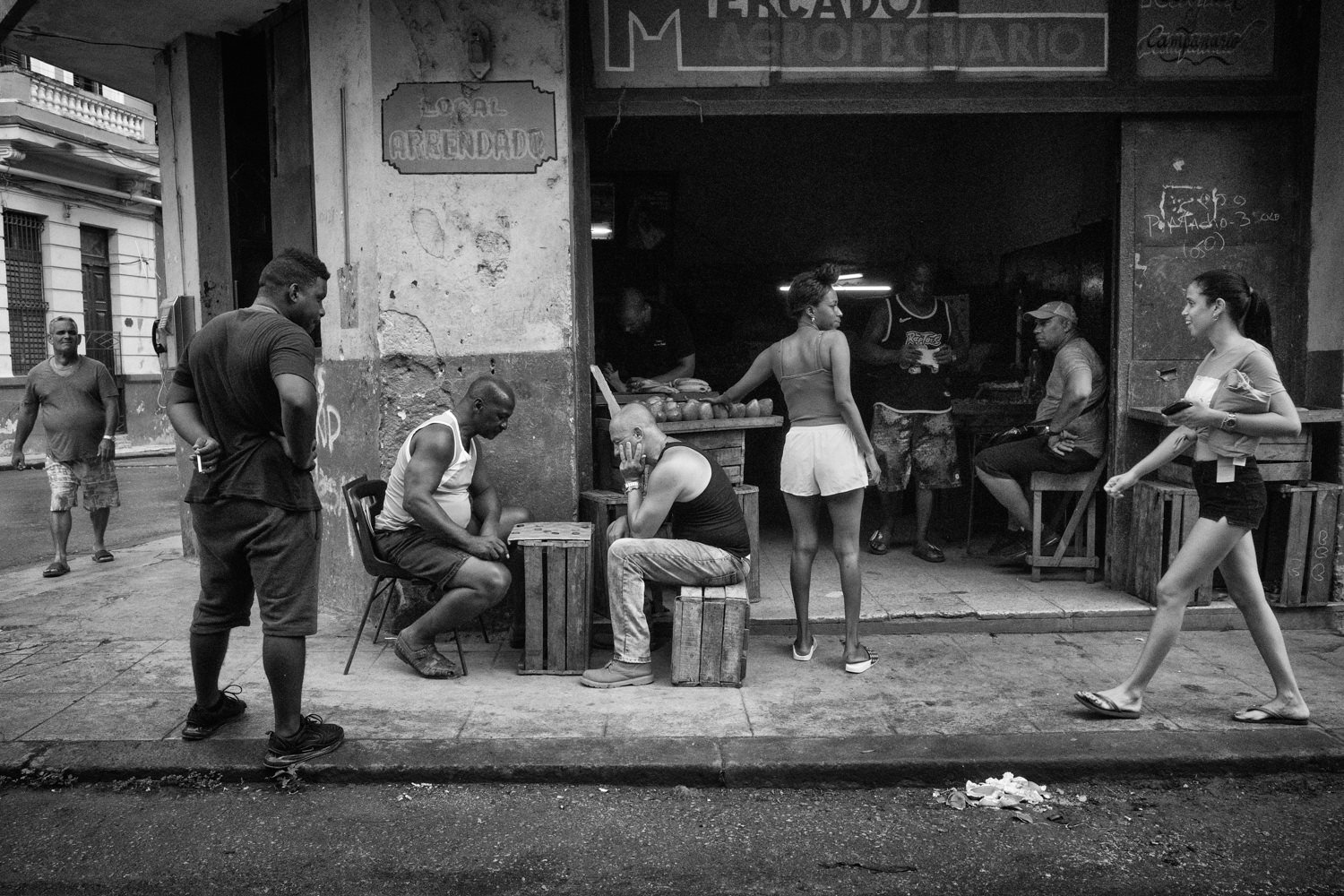As a Leica Ambassador and long-time Q-system user who has been teaching at the Leica Akademie and served as the Q3 testimonial for the Italian market, I'll share my proven configuration methods that have helped me capture compelling street moments.
Leica Q3
Core Street Photography Setup
For the majority of my street work, I use what I consider the optimal configuration for capturing decisive moments:
Exposure Mode: Aperture Priority (Mode A)
Aperture Setting: f/11
Auto ISO Configuration:
Maximum ISO: 12800
Minimum Shutter Speed: 1/250s
Focus: Set to hyperfocal distance
Image Style: Black and white preview with color DNG files
Berlin
Understanding Hyperfocal Distance
The hyperfocal distance is a powerful concept in street photography. When you focus at the hyperfocal distance, everything from half that distance to infinity will be in acceptable focus. For example, with the Q3's 28mm lens at f/11, setting the focus to approximately 2.5 meters means everything from about 1.25 meters to infinity will be sharp. This is particularly valuable in street photography because:
You don't need to focus for each shot
You can shoot instantly knowing your subject will be sharp
You can concentrate on composition rather than focusing
Multiple subjects at different distances will all be in focus
It's perfect for capturing spontaneous moments without focus delay
This setup offers several key advantages:
Perfect Exposure Control: Aperture Priority mode combined with Auto ISO provides the flexibility to respond to changing light conditions while maintaining creative control. The camera adjusts sensitivity automatically while keeping shutter speeds fast enough to freeze motion.
Maximum Depth of Field: The f/11 aperture setting ensures sharp images from foreground to background, crucial when working quickly in dynamic street situations. This delivers that classic street photography look where everything in the frame tells part of the story.
Speed and Reliability: Setting the minimum shutter speed to 1/250s guarantees motion-free images, even with moving subjects. The high maximum ISO of 12800 ensures this shutter speed is maintained even in challenging light.
Creative Vision: Working with the black and white preview helps me concentrate on form, light, and composition while shooting. Having color DNG files gives me full creative control in post-processing.
Venice
Portrait Configuration
When I transition to street portraits, I modify my settings to:
Exposure Mode: Aperture Priority (Mode A)
Aperture Setting: f/1.7
Auto ISO Configuration:
Maximum ISO: 12800
Minimum Shutter Speed: 1/250s
Focus: Automatic with Face Detection
Rome
The Q3's Revolutionary Face Detection System
The Q3's face and eye detection system represents a significant leap forward in autofocus technology. What makes it exceptional is its ability to:
Instant Recognition: The system identifies faces within milliseconds, even in challenging lighting conditions or when subjects are wearing glasses or masks.
Eye Tracking Precision: The camera not only detects faces but locks onto the nearest eye with remarkable accuracy, ensuring the most critical part of your portrait is always in sharp focus.
Multiple Subject Handling: When multiple faces are in the frame, the Q3 intelligently prioritizes the nearest subject while allowing quick switching between detected faces using the joystick.
Movement Prediction: The system excels at tracking moving subjects, maintaining focus even when people are walking or turning their heads.
This portrait configuration provides:
Beautiful Separation: The wide f/1.7 aperture creates that signature Leica look with gorgeous subject isolation and creamy bokeh.
Reliable Focus: Face detection ensures sharp focus on the subject's eyes, even when working quickly.
Consistent Results: Maintaining the same Auto ISO settings ensures uniformity across all my work while providing the flexibility needed for various lighting conditions.
Milano
Why This Setup Works
After years of shooting with the Q system and specifically testing these configurations with the Q3, I've found this setup provides the perfect balance of technical excellence and creative freedom. The camera becomes an extension of your vision, allowing you to focus entirely on composition and timing – the true essence of street photography.
The Q3's exceptional high ISO performance and fast autofocus system make these configurations particularly effective. The camera's intuitive interface allows for quick transitions between street and portrait settings when needed.
Hong Kong
Final Thoughts
As someone who has been deeply involved with the Q system since its inception, I can confidently say that these configurations maximize the Q3's potential for street photography. The combination of hyperfocal distance for street scenes and advanced face detection for portraits creates a versatile tool that can handle any street photography situation.
Remember that while these are my preferred settings based on extensive experience, they serve as a starting point. The key is to understand why each setting is chosen and then adapt them to your personal shooting style and specific requirements.


